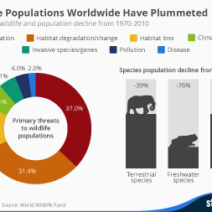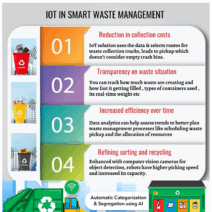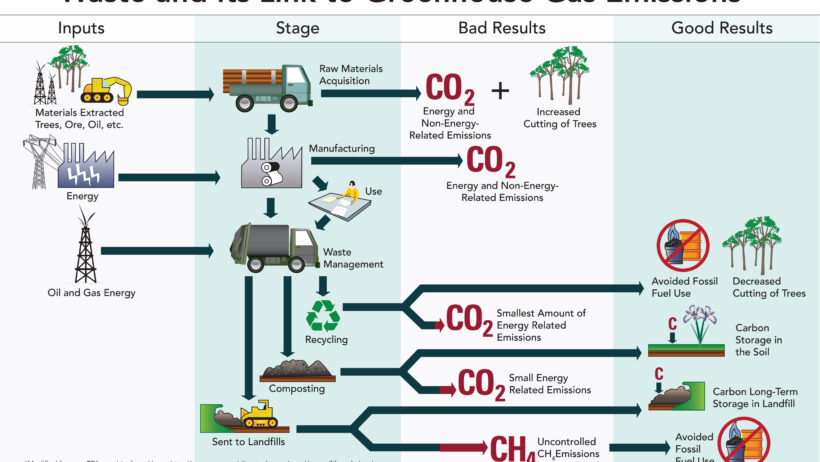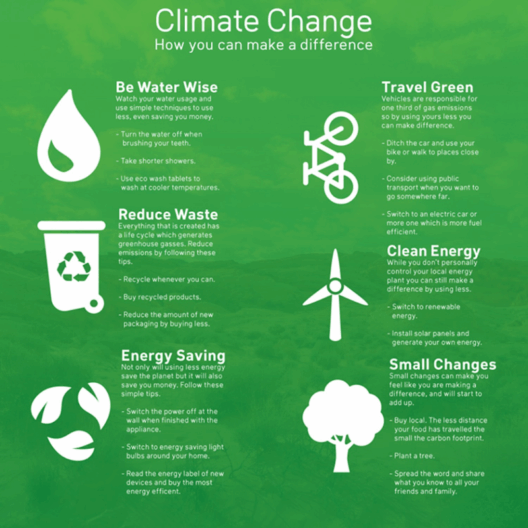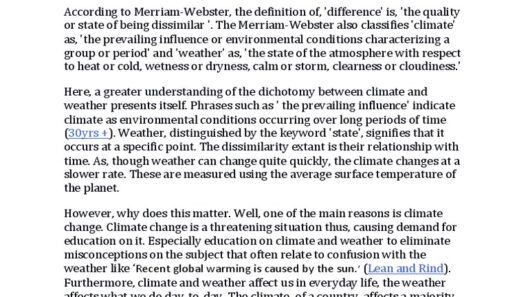The phenomenon of climate change looms large over our planet, necessitating immediate and sustained action. One of the most effective strategies to combat this challenge is recycling. Through a multifaceted approach, recycling plays a pivotal role in reducing greenhouse gas emissions, a significant contributor to global warming. Below, we explore the intricate relationship between recycling and climate change, examining how waste management alters carbon emissions and promotes sustainable resource use.
The Mechanism of Greenhouse Gases
To fully understand how recycling mitigates climate change, we must first grasp the concept of greenhouse gases (GHGs). These gases, including carbon dioxide (CO2), methane (CH4), and nitrous oxide (N2O), trap heat in the atmosphere, leading to the greenhouse effect. The rise in global temperatures has far-reaching consequences, including extreme weather patterns, sea-level rise, and ecological disruptions. Recycling effectively combats these emissions by reducing the amount of waste entering landfills and decreasing the energy consumption associated with manufacturing new products.
Decreasing Landfill Emissions
Landfills are not merely repositories for discarded materials; they are also significant sources of greenhouse gas emissions. When organic waste decomposes anaerobically in landfills, methane—a gas more potent than CO2 in terms of its heat-trapping capabilities—is released into the atmosphere. By diverting materials from landfills through recycling efforts, we substantially limit the methane emissions generated by this waste. Each ton of material recycled can prevent nearly a ton of carbon dioxide equivalents from being emitted, showcasing the direct impact recycling has on lowering GHG emissions.
Energy Conservation through Recycling
Another critical avenue through which recycling contributes to climate change mitigation is energy conservation. The production of new products from raw materials demands extensive energy, often derived from fossil fuels—one of the leading sources of carbon emissions. For instance, manufacturing aluminum from bauxite ore requires significant electricity and generates alarming amounts of CO2. However, recycling aluminum saves up to 95% of the energy necessary to produce new aluminum. Similarly, recycling paper conserves substantial amounts of water and energy compared to producing paper from virgin timber. By employing recycled materials, industries can dramatically reduce their carbon footprint while simultaneously preserving natural resources.
Resource Efficiency and Eco-Friendly Innovations
Recycling engenders a culture of resource efficiency, fostering a sustainable approach to consumption. When materials are recycled, they are reintroduced into the production cycle rather than being disposed of irretrievably. This process not only conserves finite resources but also reduces the need for mining, logging, and drilling, practices that are energy-intensive and often destructive to ecosystems. For example, using recycled steel instead of newly mined steel can lead to a 40% decrease in carbon emissions. The utilization of recycled materials is becoming a cornerstone of innovative, eco-friendly technologies, enabling businesses to work towards more sustainable models of production.
Creating a Circular Economy
The ultimate goal of recycling is to transition from a linear economy—where products are created, used, and discarded—to a circular economy, which emphasizes sustainability and longevity of resources. In a circular economy, the lifecycle of products is maximized through reuse, repair, and recycling, minimizing waste and fostering sustainable community practices. This shift not only empowers individuals and businesses to contribute to climate change mitigation but also engenders economic growth through new jobs and markets in the recycling and re-manufacturing sectors. By actively engaging in recycling initiatives, individuals can advocate for systemic changes that prioritize environmental health over short-term convenience.
Community Engagement and Educational Efforts
While the role of recycling in addressing climate change is compelling, success hinges on community engagement and education. Public awareness campaigns are vital to inform citizens about recycling’s benefits and encourage participation. Simple, actionable steps can make a significant difference: setting up local recycling programs, hosting educational workshops, and promoting responsible consumption habits. Knowledgeable communities are empowered to take charge of their waste and choose sustainable alternatives, thereby amplifying the impact of recycling efforts.
The Economic Argument for Recycling
Moreover, there exists a strong economic case for recycling. As countries and communities invest in recycling infrastructures, they create job opportunities in collection, processing, and innovative product manufacturing. Recycling not only mitigates the environmental crisis but also bolsters local economies. Statistically, for every job in the landfill sector, approximately 1.17 jobs are created in recycling. Thus, recycling represents a dual benefit: it contributes to environmental sustainability and stimulates economic development simultaneously.
Conclusion: A Collective Responsibility
In summary, the act of recycling is integral to our collective effort against climate change. Through reducing landfill emissions, conserving energy, promoting resource efficiency, and fostering a circular economy, recycling presents a comprehensive solution that addresses environmental degradation while providing economic benefits. The responsibility lies with each individual to engage in recycling practices, which collectively can lead to the necessary transformative shifts in our approach to consumption and waste management. As we navigate the complexities of climate change, recycling serves as a beacon of hope, illustrating how simple actions can yield substantial environmental benefits.

